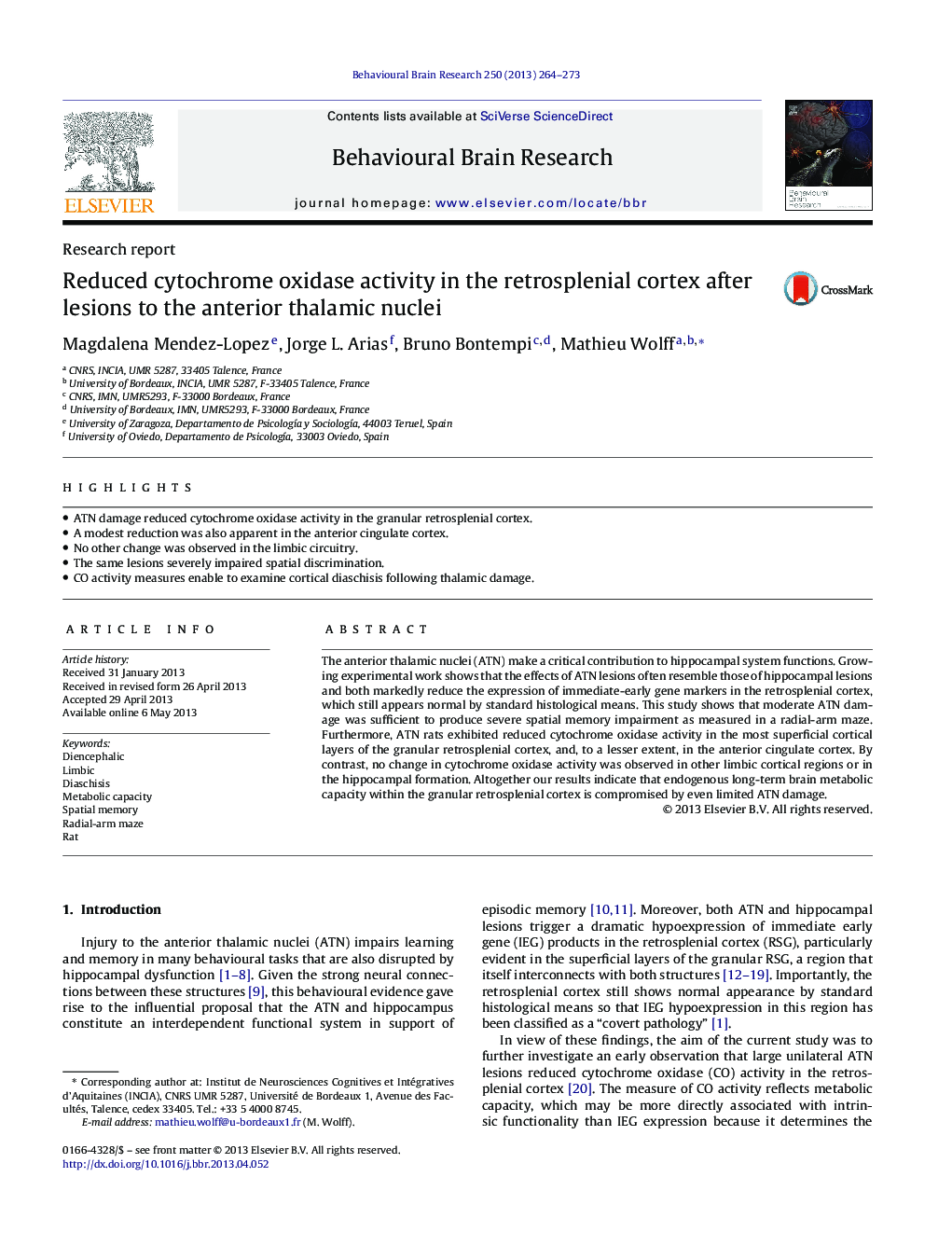| Article ID | Journal | Published Year | Pages | File Type |
|---|---|---|---|---|
| 6259009 | Behavioural Brain Research | 2013 | 10 Pages |
â¢ATN damage reduced cytochrome oxidase activity in the granular retrosplenial cortex.â¢A modest reduction was also apparent in the anterior cingulate cortex.â¢No other change was observed in the limbic circuitry.â¢The same lesions severely impaired spatial discrimination.â¢CO activity measures enable to examine cortical diaschisis following thalamic damage.
The anterior thalamic nuclei (ATN) make a critical contribution to hippocampal system functions. Growing experimental work shows that the effects of ATN lesions often resemble those of hippocampal lesions and both markedly reduce the expression of immediate-early gene markers in the retrosplenial cortex, which still appears normal by standard histological means. This study shows that moderate ATN damage was sufficient to produce severe spatial memory impairment as measured in a radial-arm maze. Furthermore, ATN rats exhibited reduced cytochrome oxidase activity in the most superficial cortical layers of the granular retrosplenial cortex, and, to a lesser extent, in the anterior cingulate cortex. By contrast, no change in cytochrome oxidase activity was observed in other limbic cortical regions or in the hippocampal formation. Altogether our results indicate that endogenous long-term brain metabolic capacity within the granular retrosplenial cortex is compromised by even limited ATN damage.
